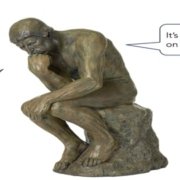Senior Living Marketing & Sales: It’s a Great Time to Experiment
[Editor’s note: The following senior living marketing & sales content was inspired by discussions during our COVID-19 Webinar, which you can access for free here.
So many businesses, including those in the senior living industry, have had to throw their marketing and sales playbooks out the window due to the COVID-19 pandemic.
While many people are mourning the loss of the “old ways,” we’d like to take a more optimistic view. Now is a good time to experiment and get creative, especially when it comes to senior living marketing and sales.
No, not everything you try will work for your community. But you might uncover some fresh approaches that you’ll want to adopt for the long term.
1. Virtual Tours for Effective Senior Living Sales
One of the challenges right now is figuring out how to replace or augment some of the more traditional high-touch tactics, like tours and marketing events, with other kinds of tech-supported and virtual tactics.
As an industry, we tend to rely A LOT on the personal tour and other in-person events. How often do you say things like “Schedule a tour, come to an event, join us for lunch”? It’s easy to make those offers, because senior living sales reps see them as easy ways to engage with people. But have you ever considered if these things are what perspectives want to do? Now is a great time to test whether virtual tours (and other virtual events) can be just as effective as in-person tours and events.
Note: when we say virtual tours, we don’t simply mean those slick, professionally shot videos, either. You probably already have some sort of virtual tour on your site (if you don’t, you should, regardless of COVID-19). We’re talking about taking virtual tours to the next level.
For example, maybe the director of dining services uses his/her phone to record a message and a walk through the kitchen as the team is preparing dinner. Show that well-stocked pantry, introduce people to the sous chef, show the staff plating the food. You get the idea.
Don’t worry about an occasional shaky video—people know the difference between slick and highly produced videos and off-the-cuff authentic ones. Which ones are going to be more believable or have the biggest impact?
Lather, rinse, repeat. Do the same sort of video tours with activities, with the facilities team, with the director of nursing, etc.
- PRO TIP: We recommend Heart Legacy to create these sorts of brand experiences. Note: if you have a library of compelling pictures from your community—for example, all of the architecture/buildings—you can create a video tour out of the photography.
2. Facebook Live.
People are glued to their devices right now and incredibly active on social media, Facebook in particular (Facebook has seen its already-high usage soar since the start of the pandemic).
Facebook Live events are great ways to create “must-see” TV. The best part? You can repurpose this content and share via other social channels, embed on your website, and share in emails.
3. Video conferencing check-in calls with prospects.
Doing video calls right now isn’t a hard sell, either. People around the globe are using these modes of communication to keep in touch with family and friends, so they are poised to accept this sort of communication from businesses as well.
Encourage the sales team to do these sorts of calls with prospects and to focus on helping, not selling.
- PRO TIP: Zoom is a popular and budget-friendly app. Skype works, too, as does Facetime.
4. Live chats hosted by real humans, not a bot.
If someone comes to your website with a question or concern, but they’re NOT ready for a phone call, a true “live chat” with a real human, not a bot, can be a great option.
Why not use a bot? Well, a bot can answer a question, but they can’t empathize. They can’t offer the all-important human touch.
- PRO TIP: SiteStaff is our very favorite chat company hosted by college educated Americans who were hired for their empathy. We train them on senior living discovery skills.
5. Interactive tools/surveys.
Sales reps love engaging with people in person during tours or lunches, but that’s not necessarily what all prospects want or need. Interactive tools and surveys (and other apps) provide a way to engage while delivering what a prospect might need in that moment.
So a senior living sales rep could send an email to a prospect saying, “I’ve really been thinking about you, and I know that you’re struggling to know if senior living is right for you or if it’s the right time to make the move. Here’s a link to an insightful interactive survey that really dives deep and helps people understand what’s best for them and their situation. There’s no obligation and it’s free to use. Give it a try and see what it says. Happy to discuss your results with you if that helps.”
The other nice thing about interactive tools/surveys is that they help create a “sticky” website (meaning people hang out on the site longer), and they provide another opportunity to convert anonymous website visitors into leads you can nurture.
- PRO TIP: Roobrik is our go-to for awesome, insightful surveys.
6. Senior Living Marketing Automation
Marketing automation will allow you to nurture leads in a way that’s meaningful to the prospect.
For example, let’s say the prospect has been interacting with a tool/survey on the memory care page. You can automatically follow up with helpful info, such as an article, related to memory care. On the other hand, if they download a financial guide, they’re going to get very different nurturing. In this case, the message should reassure and provide information regarding how affordable senior living can be.
And when we use the word “automated,” we mean exactly that: the system will automatically trigger a series of emails based on the actions a person takes on the site.
Give prospects lots of opportunities to choose how they want to engage with you (so a mix of chat, guides, surveys, etc.). And once they submit a form—meaning once they “opt in” based on their comfort level and where they are in their journey—then marketing automation takes over and nurtures them, encourages them, builds trust, and gives them more resources that are relevant to what they’ve expressed interest in. Over time, the nurturing will move them into a sales qualified interaction of a phone call or a tour or a virtual tour.
- Pro Tip: We highly recommend HubSpot (we’re a HubSpot certified partner) for marketing automation.
Need help trying new ideas? We’re the app for that! :)
Seriously, we’ve been in your shoes, and we can help. We keep our eyes on the latest and greatest technology. This gives us a sense of if and how it could work for the senior living industry. Get in touch and let’s talk about how we can help.











